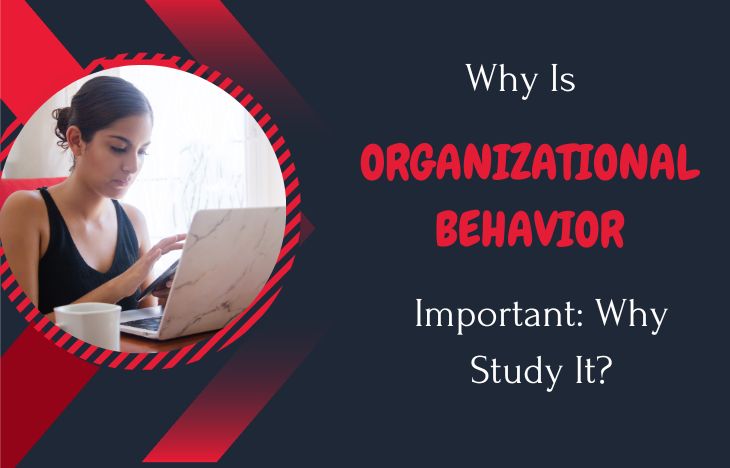The most effective corporate executives are those that constantly seek out new tactics and approaches to boost performance, not just by enhancing worker output but also by enhancing their contentment with their work environment. This may be accomplished by comprehending how staff members communicate with one another and with management, as well as what drives them. To find out what distinguishes the most productive workers, one approach to accomplish this is to examine how teams, management, and individual employees interact.
The behavioral interactions that take place between groups and individuals in an organizational environment are referred to as organizational behavior. The five components listed below are crucial for understanding organizational behavior:
- People
- Structure
- Technology
- Social system
- Environment
By influencing strategies surrounding training, continuous development, collaboration, and workforce procedures, understanding these components and their dynamic interrelationships may assist corporate leaders in achieving short- and long-term goals for boosting employee productivity and performance.
The importance of studying organizational behavior
Organizational behavior, at its heart, examines how social and environmental factors influence how individuals or groups of people function. The effectiveness of an organization depends heavily on how its members interact, communicate, and work together. You may use organizational behavior to increase the effectiveness and efficiency of your staff by examining and comprehending these factors. In addition, it can assist you in achieving the next organizational and workplace culture objectives. Moreover, you can understand these factors in detail by getting help from various resources including free organizational behavior textbooks.
Better communication channels and protocols
Due to the way, the workplace is set up as well as the culture, beliefs, and objectives of the business, different employees react differently to different forms of communication and behave in certain ways. They frequently cooperate more effectively with coworkers and supervisors who have their behavioral qualities. As a result, having a thorough understanding of organizational behavior may help middle management create teams that are more productive and improve relations with front-line workers.
You can determine if your staff responds better to an autocratic or supportive management style by concluding the study of organizational behavior.
Comfortable work environment
The improvement of the working environment for workers is one of the main advantages of organizational behavioral analysis. Business leaders must provide a supportive and empowering work environment given the growing number of ped steroids for sales workers who work from home. This will enable smooth team communication and cooperation. As a result, the study of organizational behavior is crucial for companies that want to adjust to the difficulties and disruptions brought on by things like the pandemic or changes in the market environment.
Influencing management style
Savvy companies utilize data to inform decisions on how to set up their company structure. Micromanagement breeds distrust fosters micromanagement and fosters a toxic work environment when managing is always watching over employees’ shoulders.
Many businesses are adopting a flatter, more linear (rather than hierarchical) structure to provide workers more discretion over how they carry out their duties or with whom they cooperate after noticing this trend through organizational behavioral analysis. A structure like this acknowledges the distinctive variations between each person and helps them to participate more actively in choices that affect them, their teams, and the entire business. Additionally, it helps company owners to build better bonds with their staff members that are based on open communication, trust, and openness.
Building a winning people strategy
Employees prefer to work for companies with a favorable corporate culture and a welcoming workplace. While trying to accomplish the aims and objectives of the company, they also desire to get along with management and other staff members. The difficulty is establishing an environment at work that encourages open dialogue, mutual respect, and seamless cooperation while meeting the particular requirements of each person or group of related tasks. Business executives must decide how they will engage with and foster the growth of their workforce and workplace culture in order to establish a winning people strategy. The endeavor is primarily relationship-focused, and organizational behavior serves as the key enabler.
Influencing human resource strategies
Business leaders may maximize the value of their human capital by understanding the complexity of their workforce and how they interact with one another. The knowledge gained from such a study can inform human resources reforms and tactics, especially in light of current research demonstrating a breakdown in the work-life balance (due to more employees working from home). The use of motivating techniques (specifically matched to the employees) can assist struggling groups that need additional support to perform better by enhancing their workplace experiences, according to HR specialists.
Conflict resolution
Business executives that are proactive stop issues before they turn into major conflicts. By figuring out where and why your employees are clashing with coworkers and management, organizational behavior measurement may aid in preemptive conflict resolution. Understanding a problem’s root cause, foreseeing its trajectory, and averting potential repercussions before they arise are all made possible with the aid of behavioral dynamics.
Wrapping Up
The fundamental tenet of organizational behavior is the conviction that a successful organization depends on a workforce that is content and productive. Organizational behavior adopts a human-centric strategy to support a workforce that is performance-oriented by primarily referencing behavioral/social sciences and psychology. As a result, corporate leaders may improve the productivity of their staff by having a thorough grasp of organizational behavior and why
it’s crucial.

